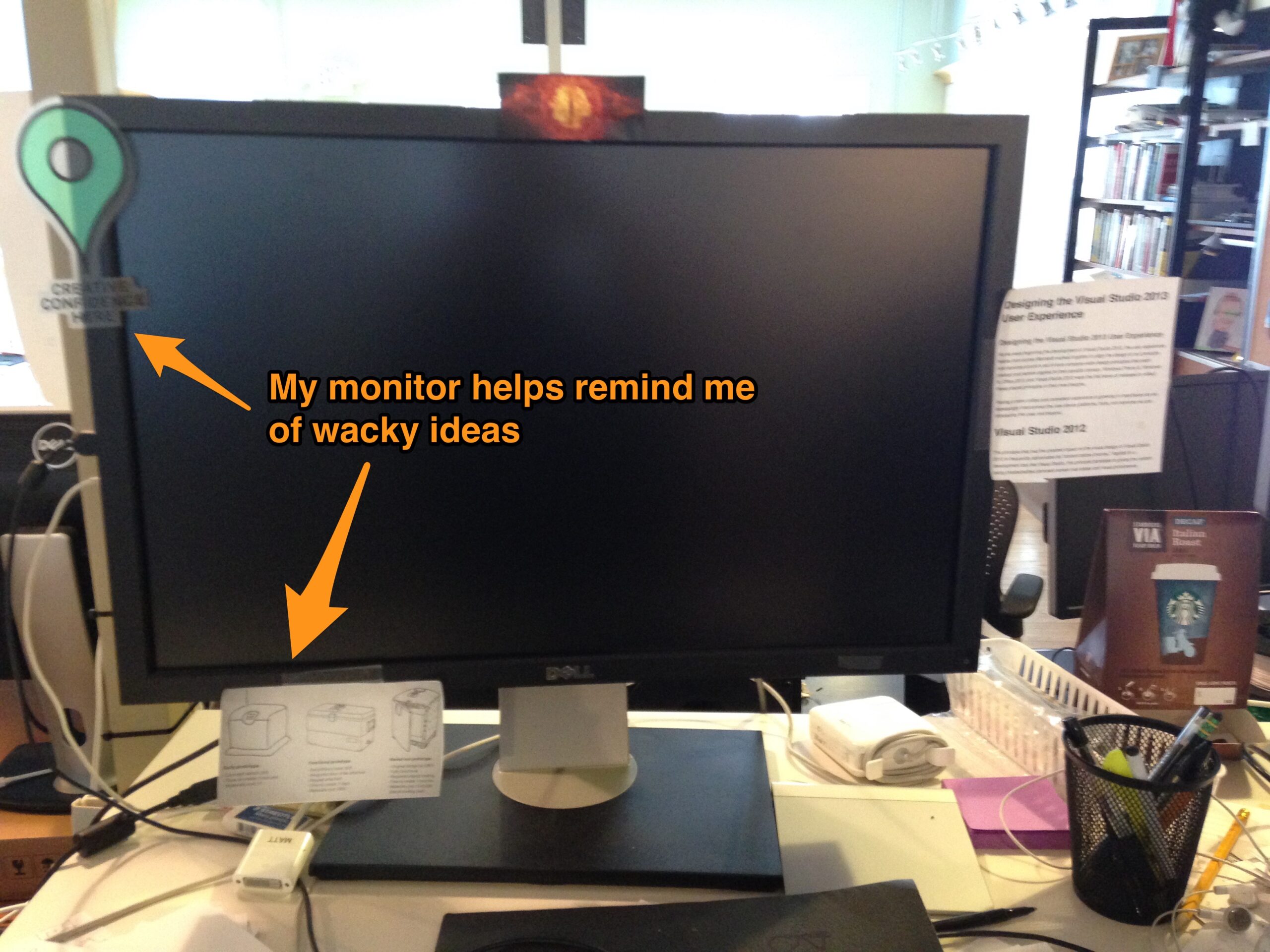For about a year now I’ve been semi-frequently using the expression “wacky idea” to describe an idea generally thought to be “outside of the box.” The majority of wacky ideas get thrown out, and that’s okay, because the ones that live on often become “amazing ideas.”
What Is a Wacky Idea?
A wacky idea is one that most people, including myself, may dismiss at first glance. I generally share them out loud to someone else—usually starting with the phrase “I’ve got a wacky idea” or “here’s a wacky idea (although sometimes I think them to myself and write them down for later) .
Prior to believing in wacky ideas, these are thoughts I never would have voiced at all—ideas I would have filtered out completely.
So, why voice an idea I’d normally dismiss? Because often wacky ideas challenge basic assumptions that we take for granted but may no longer hold. Things change over time and I, at least, love to embrace change. Assumptions we make now may be based on facts that have changed, and that’s okay—as long we don’t keep assuming them!
An Example
Let me give you the best example I have of a wacky idea that became an amazing idea. At the start of a project, we specified a full-out, beautiful, hold-your-hand-the-whole-way Windows GUI application for getting through a workflow. It was to be built in the second phase of the project. It looked great!
As phase 1 progressed, two things changed:
- The scope of the phase 1 project changed, and we wanted more time and budget to work on it.
- We learned via on-site observations that the phase 2 application was only to be used by 2 or 3 long-term, technical staff at our customer’s location. No end users would see the phase 2 application.
During a scope, budget, and timeline conversation, it hit me. A wacky idea! I said “I have a wacky idea…what if we build this thing as a command line Ruby application that steps through the workflow with the user.”

The new approach was almost an entirely different application than was originally specified. And that was just fine, because functionally it solved the same problems, but could be built much more easily and cheaply than the full GUI application.
After the project, we estimated that the wacky idea saved the project at least $20,000 that was better spent elsewhere. Not bad!
Wacky Ideas Require Trust
There are two big risks that wacky ideas expose:
- I’ll feel like an idiot if the team decides the idea is no good.
- My team will think I’m an idiot if the idea is no good.
To overcome these risks, my teammates and I have agreed to treat the words “wacky idea” as a trigger phrase:
- I begin by saying “I have a wacky idea.” This helps me mentally overcome my filters and fears of rejection and being judged.
- When I hear someone say “I have a wacky idea,” I force myself to not immediately dismiss it or judge the person saying it. Instead, I prefer to get at the reason why it came up. What assumptions are being question? What can we learn by reconsidering things?
I don’t think wacky ideas would work so well without some trusted friends, family, or colleagues to collaborate with. When I throw out a wacky idea, I think of myself as throwing out a raw idea. It will take a great team to refine that raw idea into something amazing (or to help convince me to throw it out!).
Remember To Share Your Wacky Ideas
To remind me to suggest wacky ideas, I keep a few things taped to my monitor:

My inspiration for this monitor reminding approach came from reading about rapid prototyping processes in Designing for Growth, an outstanding text. I actually have a picture from the book, of an IDEO prototype, taped to my monitor. I also have a Creative Confidence sticker taped to my monitor as well. They help remind me that wacky ideas are worth sharing, and that they can be refined over time into something valuable.
I’ve got an idea! I suggest you and your team start using wacky ideas, as I’m confident you’ll find as much value as I have. Enjoy!


I think this “wacky idea” idea has been very useful inside Atomic. By declaring something a “wacky idea” you can de-couple it from your ego and share it with a group of people able to evaluate or add to it. One of my favorite advances for Atomic last year.
Agreed. I’ve found that some of the best multi-disciplinary collaboration happens when the team is forging a wacky idea into an amazing idea.